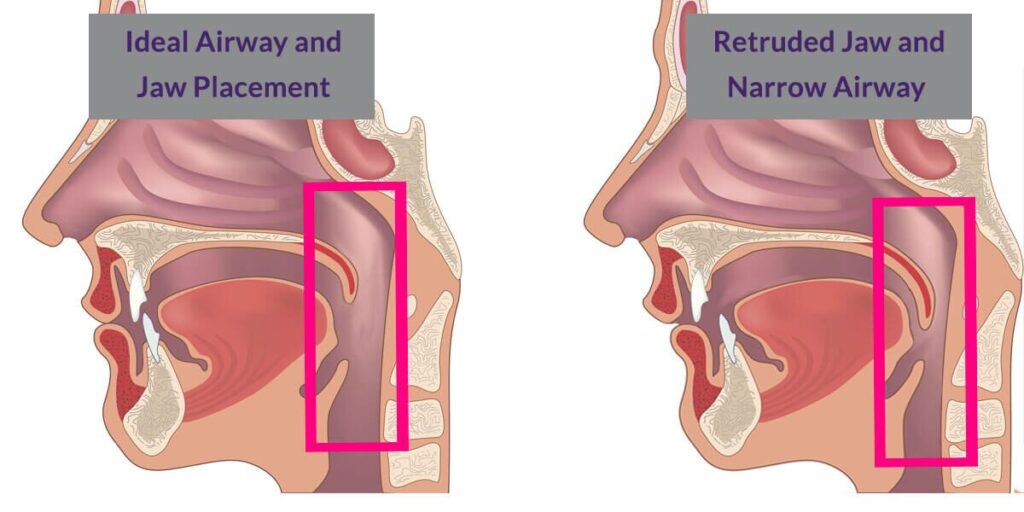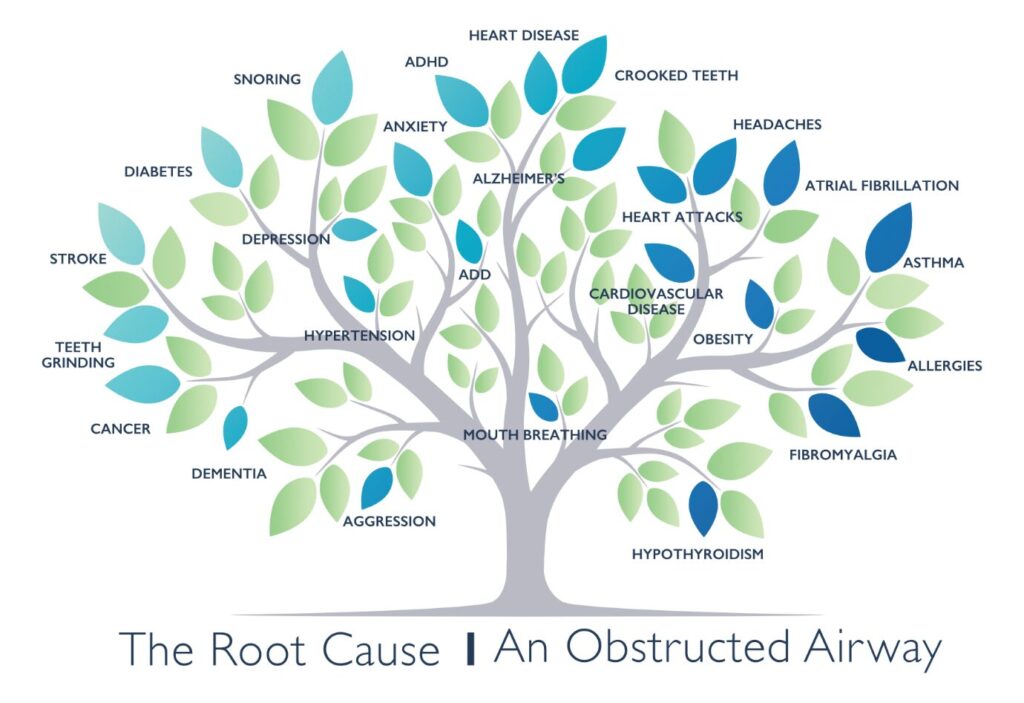What is facial growth & development?
Significant growth and developmental milestones occur in the first 18 months of life. By age 6, approximately 60% of a child’s facial development is completed, reaching 90% by age 12. Various factors contribute to facial growth, including genetics, muscle function, breathing, sleep, and nutrition. Face/ airway growth from early age is depended on proper breast feeding. Common facial development abnormalities in children often stem from compromised airways or difficulties in nasal breathing.

The connection between growth, development & the airway
When a child’s skeletal (jaw) or muscular (tongue) development is compromised, it can significantly impact their ability to breath , sleep, breastfeed, and even eat certain food. Overtime these subtle developmental cues can evolve into more serious health challenges, requiring intervention later in life. Thankfully advancement in medical screening have greatly deepened our understanding of the intricate relationship between breast feeding, chewing, breathing, sleep and airway development. Clear structural, functional, behavioural indicators often reveal the presence of airway disorders, some of which can be detected as early as childbirth.
Pediatric Airway Disorders : What Changes it Makes in Adults

The importance of early intervention
Early invention at the centre for airway & facial development focuses on children aged till growing stages. they may begin to show signs indicating a need for structural and functional improvements.The philosophy behind early intervention is simple: the earlier a problem is identified and treated, the greater the chances of a) resolving the issue and b) preventing any future complications as the child continues to grow and develop.Moreover, early intervention methods are inherently less invasive. This is because a child’s body, particularly the airway & jaws are still forming and responds more readily to treatment.
Every treatment starts with a comprehensive & functional airway assessment
we begin with a thorough evaluation to detect signs and symptoms that may point to airway dysfunction. We assess various factors, including jaw development and facial harmony, while also screening for breathing and oral habits that could impact craniofacial growth overtime.
Once we identify the root cause, we develop a personalized treatment plan tailored to address both are primary issue and any additional concerns that arise during the consultation. Our approach is based on delivering long-term results through a comprehensive, whole-body methodology.

